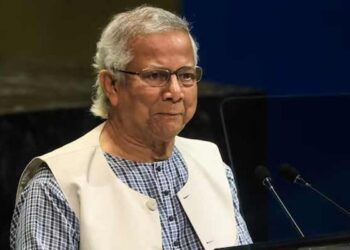Select Language:
The shutdown of the U.S. government hit its 35th day on Tuesday, matching a previous record set during President Donald Trump’s first term, as legislators expressed cautious optimism behind closed doors about resolving the deadlock.
It’s highly likely this closure will become the longest in history, with no significant breakthroughs anticipated before it crosses into its sixth week at midnight—though some fragile signals in Congress suggest a potential escape route may be nearer than ever.
Senate Majority Leader John Thune exuded optimism on Monday, telling reporters he felt “hopeful” that renewed and energized negotiations between Republicans and Democrats could lead to an agreement before next week.
Since Congress failed to pass funding beyond September 30, the government has been grinding to a halt, with increasing hardship as essential programs—like food assistance relied on by millions—remain in limbo.
“I’ll be honest, none of us expected it to drag on this long. We didn’t believe it, we couldn’t have imagined it,” House Speaker Mike Johnson said during a press conference marking six weeks of shutdown.
“It’s now tied for the longest shutdown in U.S. history, and we never thought we’d have to come in here every single day—day after day, constantly repeating the same facts to the American people and showing clearly what’s happening here.”
Approximately 1.4 million federal workers—from air traffic controllers to park rangers—have been placed on unpaid leave or compelled to work without pay, while critical welfare programs and active-duty military paychecks remain under threat.
Some lawmakers, including Thune and Johnson, are pinning hopes on upcoming elections in New York, Virginia, New Jersey, and California on Tuesday, believing these could build momentum to reopen the government.
However, both sides remain entrenched over the central obstacle: healthcare funding. Democrats insist they will only vote to end the shutdown once there’s a deal to extend expiring health insurance subsidies that help millions afford coverage. Republicans, meanwhile, demand action on healthcare reform only after Democrats agree to restart government operations.
Despite leadership’s reluctance to compromise, some moderate Democrats are working behind the scenes to find a solution. A bipartisan group of four centrist House members unveiled a proposal Monday aimed at reducing healthcare costs.
Democrats believe the rising premiums for millions as they enroll in health plans for the upcoming year will pressure Republicans to seek compromise. Yet, President Trump remains steadfast in refusing to negotiate, telling CBS News on Sunday he won’t be “extorted.”
Trump has also used the shutdown as leverage, threatening mass layoffs of federal employees and targeting progressive priorities. Last week, his administration threatened to cut off a crucial aid program aiding 42 million Americans with grocery bills for the first time in its more than 60-year history—an action blocked by courts.
Nonetheless, Trump insisted Tuesday that food aid would only be released once the government reopens, posting on Truth Social that benefits from the SNAP program “will be given only when the Radical Left Democrats open up government, which they can easily do, and not before!”
He also revived his call to eliminate the Senate filibuster— the procedural rule requiring 60 votes to pass most legislation—so Republicans could fund the government without Democratic support.







